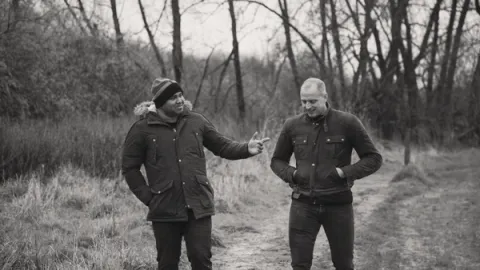Stages of testicular cancer

Stage refers to the degree of which a cancer has spread from its site of origin.
There are different stages of testicular cancer. The higher the stage, the more advanced the cancer is.
Your stage is determined by looking at the tumor in the testicle, lymph nodes in the retroperitoneum (part of the abdomen), metastases (that is, spread to other parts of the body) and levels of tumor markers in your blood (serum).
The three main stages of testicular cancer are localized, regional (lymph node only) spread, and distant spread. Treatment and survival rates can vary by stage.
Getting diagnosed with testicular cancer can be overwhelming for a lot of reasons. One of them is the sheer volume of information thrown at you. Type of cancer, treatment options, side effects, quality of life, prognosis (what to expect in terms of your recovery)—honestly, it’s enough to make your head spin.
Not to worry, we’ve got you covered. In this article, we’ll walk through the main stages of testicular cancer—breaking down the jargon, what each stage means for you, and how it’s treated.
What is testicular cancer staging?
Staging is a way of measuring how large the cancer is or how much it has spread. The higher the stage, the more advanced the cancer is.
Introducing the TNMS system
Doctors use a system called TNM to determine what stage any cancer is at:
T = tumors
N = nodes, as in whether the cancer has spread to nearby lymph nodes
M = metastases, as in whether the cancer has spread to other parts of the body
For testicular cancer, we have to consider one additional factor—hence the acronym TNMS:
S = serum, as in the level of tumor markers in the serum ( in this case, your blood)
Tumor markers are any substance (typically hormones or proteins) found in your body that are produced either by the cancer or your body’s response to it. They’re often found in bodily fluids such as blood or urine. Markers can be helpful in determining what treatments might work, or how well a current treatment is working.
Testicular cancer is scored based on these four categories: tumors, nodes, metastases, and serum. Your total score determines what stage your cancer is. It’s a bit like golf: the lower the score, the better.
The 3 (or 4) stages of testicular cancer
Using your TNMS score, your doctor will classify your cancer diagnosis as one of three stages—four, if you count the stage for abnormal or pre-cancerous cells that can sometimes lead to testicular cancer.
For each major stage, there are also several sub-stages, based on where your cancer has spread and how elevated your tumour markers are.
Stage 0: pre-cancer
Not technically one of the main stages of testicular cancer, this stage is also known as GCNIS, or germ cell neoplasia in situ. This is where abnormal (pre-cancerous) cells are confined to the testicle, typically discovered during an infertility exam.
There are no elevated tumour markers at this point. Treatments at this point may include observation (watchful waiting), surgery and/or radiation. Your doctor will probably want to monitor your condition closely, because GCNIS increases your risk of developing cancer over the next 10 years.
Stage 1: localized cancer
At this stage, the cancer is found in the testicle but has not spread. Stage 1 has the highest 5-year survival rate, at 99 to 100%.
Depending on what kind of testicular cancer you have, treatments may include surgery to remove the testicle (orchiectomy), followed by observation (otherwise known as active surveillance), chemotherapy, and in some cases surgery to remove lymph nodes at the back of the abdomen (also known as RPLND).
There are three sub-stages to localized testicular cancer.
Stage 1A
The cancer is limited to the testicle.
There is no “lymphovascular invasion” (LVI). LVI refers to the microscopic spread of cancer cells into the small blood and lymphatic vessels of the testicle.
Your tumour markers are normal—there’s no sign of cancer anywhere else in the body.
People at this stage are usually cured after surgery. The risk of the cancer coming back and requiring further treatment is low.
Stage 1B
The cancer has spread locally but is confined to the scrotum.
The most common type of spread is LVI, seen under a microscope.
Other areas of possible spread include the outer testicle membrane, spermatic cord, or scrotum.
Your tumour markers are normal at this stage, and there’s no sign of cancer anywhere else in the body.
People at this stage are usually cured after surgery, but there is a higher risk the cancer will come back, requiring further treatment.
Stage 1S
Tumor markers are still abnormal after surgery, but there’s no sign of cancer on imaging tests. This means there is cancer elsewhere in the body and more treatment is needed.
People at this stage are usually cured. Chemotherapy is the treatment of choice.
Note: This stage is very rare. There are many reasons your tumor markers may not be truly elevated after surgery, so be sure to seek the opinion of a testicular cancer expert.
Stage 2: regional spread
At this stage, the cancer has spread to lymph nodes in a part of the abdomen known as the retroperitoneum, but not to more distant parts of the body. The retroperitoneum is located near the kidneys, aorta and vena cava—the biggest blood vessels in the body. During pregnancy, the testicles develop near the kidneys and “descend” to the scrotum around eight months. As a result, all the blood supply, muscles, nerves, and lymphatic drainage for the testicles therefore originate in this area. That’s why testicular cancer typically spreads to these lymph nodes first.
Your tumor markers may or may not be elevated at this stage. The 5-year survival rate is 96%.
Depending on the type of testicular cancer, treatment may include surgery, radiation, chemotherapy or some combination of the three.
There are three sub-stages to testicular cancer with regional spread:
Stage 2A: tumors in the nearby lymph nodes are 2 centimeters or less (roughly the size of a marble or smaller).
Stage 2B: tumors in the nearby lymph nodes are 2-5 centimeters (roughly the size of a grape).
Stage 2C: a tumor in at least one nearby lymph node is bigger than 5 centimeters (roughly the size of a lime, or larger).
Stage 3: distant spread
This stage is sometimes referred to as distant metastatic disease, because the cancer has spread beyond the lymph nodes in the abdomen to other parts of the body. Stage 3 has a 5-year survival rate of 73%.
Depending on the type of testicular cancer, treatment may include surgery, chemotherapy and observation.
There are three sub-stages to testicular cancer with distant spread:
Stage 3A
The cancer has spread to lymph nodes outside the abdomen or to the lungs.
Your tumor markers may or may not be slightly elevated.
Stage 3B
Tumor markers are somewhat elevated. The cancer may or may not have spread to lymph nodes outside the abdomen, or to the lungs.
Stage 3C
Tumor markers are very high, or the cancer has spread to parts of the body away from the lungs, like the liver or brain.
When it comes to testicular cancer, knowledge is power. Knowing the stage of your diagnosis can help you prepare for what’s ahead.
Be sure to talk with your doctor, to learn as much as you can about your particular stage of testicular cancer, and the best plan of action for treating it.


